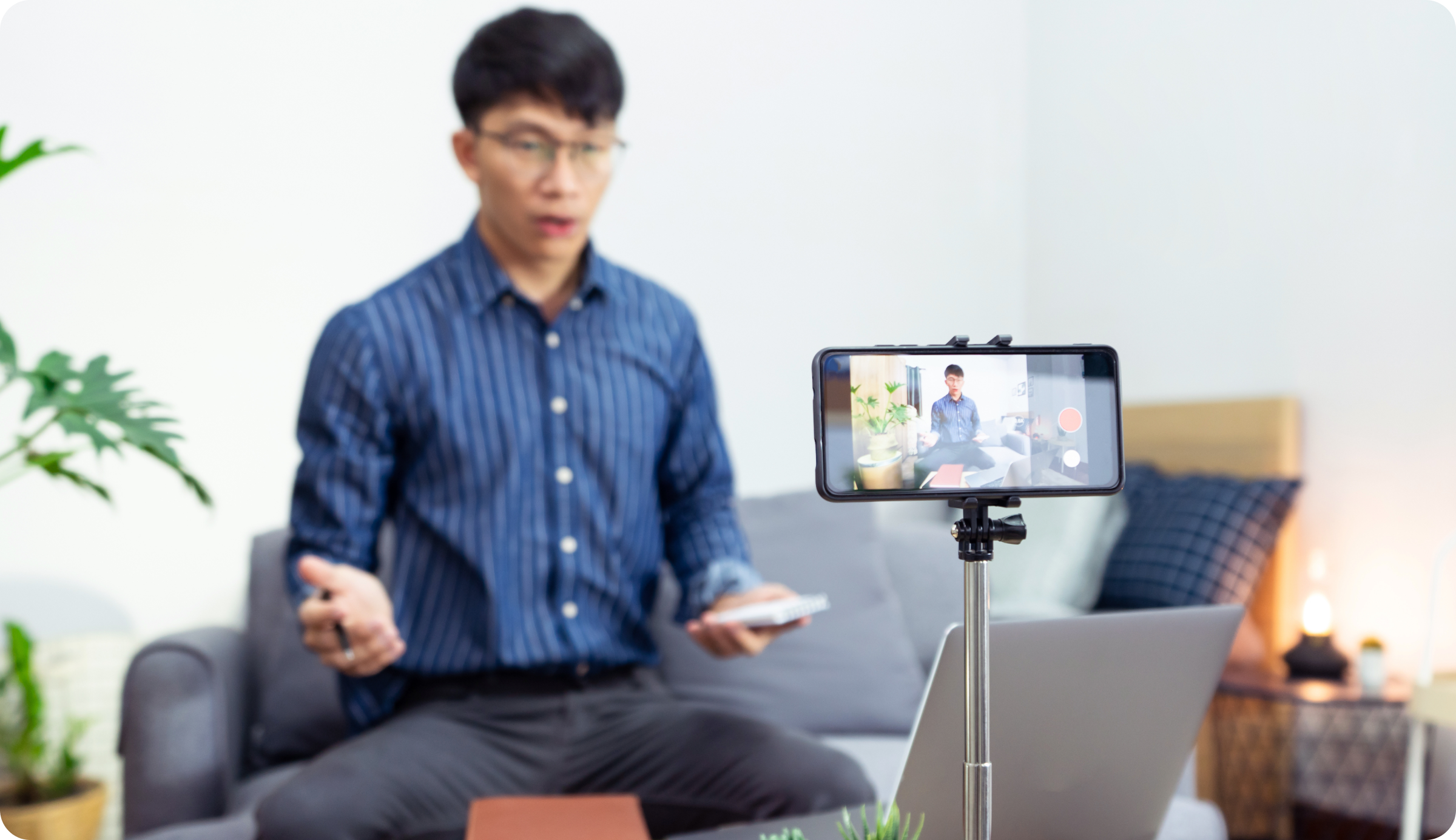It turns out getting feedback from others—especially others with a lot of expertise—can really accelerate your progress when you’re trying to learn something new or improve your skills.
There’s some really great research about the value of feedback whether you are trying to learn a new language, improve your presentation skills, or become a better teacher.
For instance, we at GoReact are fans of Jim Knight (@jimknight99) for his work on the impact of video recording and feedback for teachers and those who coach them. In 2012, he and others published “Record, Replay, Reflect: Videotaped Lessons Accelerate Learning for Teachers and Coaches” in The Learning Forward Journal. Video recordings are essential for a few reasons:
Recording Yourself on Video is a Must
It’s true. You’ve got to do it, and here’s why.
Giving feedback, handling feedback, and finding feedback.
1. A video recording is painfully objective
It’s painful because at first most people are uncomfortable looking at themselves on screen. I’m not sure why, but it’s common. Maybe it’s modesty or shyness. Maybe it’s because watching ourselves is like an out-of-body experience, and we instinctively want to be back in-body, thank you very much. This discomfort makes us shun videos of ourselves, but if you want to get better, learn to watch yourself on screen.
And video is objective because the camera doesn’t care who you are. You can’t bribe it to only show your most flattering attributes, nor will it malign you if you hurt its feelings. If you are good, it will show through. If you are bad, that will show through too. Most of us are some of both, which is precisely the point.
Except for a chosen few, most of us don’t live our personal or professional lives on film. According to Knight, “Teachers are often surprised by what they see. If you want to get better, learn to watch yourself on screen.”
Really? Surprised? How can that be? We know what we are doing, don’t we? Well actually no. We are aware of part of what we are doing, but a lot we miss. I recently spoke to a presentation coach from Australia, who told me of a technique they use with clients. He said, “We play the video back for them at double-speed.” All of a sudden, nervous habits like a swinging arm or face-touching which feel casual at normal speed look like the flapping, wounded bird trying to take flight. These repetitive motions are noticed subconsciously by the audience and become part of their appraisal of a speaker’s confidence and competence.
Experiencing the painful objectivity of video is the first step to becoming truly aware of the level of our current performance.
2. Video sparks a desire to improve
Once we conquer the fear of watching ourselves, there is more to surprise us than just the awareness of things we didn’t notice before. It is also surprising how empowering that awareness is. Three things come together:
- Awareness of the current performance level.
- Motivation to improve. We tend to care a lot about a person when it is us.
- Power to do something about it. We have more power over ourselves than any other human being.
It shouldn’t feel like such a revelation, but this combination inspires us to act, to use our powers to make a change to improve. It’s a positive compulsion that is very difficult to resist. As Knight says, it “propels forward into change.” Just watching ourselves sparks a desire to change.
Mentors can have a huge impact on improvement.
3. Awareness and motivation make us receptive to genuine and useful feedback
The first two points are internal. They are self-driven forms of feedback. They occur within us when we see ourselves on video, but there is more to fueling dramatic improvement. The next step is getting some objective, other-driven feedback as well. A teacher, a mentor, or a coach can have a huge impact.
Consider that even Tiger Woods has a coach. Why? Who coaches Tiger Woods? Tiger’s coach is unlikely to ever be a more accomplished golfer than he is. That’s not the point. Getting objective, precise, and useful feedback is. Getting another person on your team as you try to improve is invaluable.
The best feedback is actionable and precise.
Not all feedback is created equal. The best feedback is actionable and precise. Your mom can probably be counted on to tell you your speech was good, even if she is the only one. But it isn’t very useful because it isn’t precise. She isn’t telling you what was good or bad. Was it your posture, one of your anecdotes, your eye-liner, what you did with your hands? “Good job” is not actionable. “Stop pulling on your earlobe” is.
In my interviews with university professors about feedback, I hear stories of one-on-one feedback sessions with students immediately following a presentation, where the teacher provides feedback. It might be something critical like, “You are losing your audience’s engagement when you turn away from them.” And the student might reply, “I didn’t turn away from them.” Without video showing the precise moment that the student exhibited the behavior, the value is lost. Both are frustrated and feel like there is a communication breakdown.
In contrast, when a video is used, the teacher can point to the precise moment when the presenter exhibited the behavior. There is no subjectivity, communication is clear, and everything is lined up for the student to improve.
At GoReact, we make software that enables this process. Learners can upload videos of their performance, or record them live in front of an audience (even if that audience is just their classmates) and get precise, time-coded feedback right on their video. It’s an easy, cloud-based method for capitalizing on all the benefits of video recordings and the best kind of feedback for improvement.
You’ll also love our latest technology article: 4 Surprising Ways Video Is Changing Education.






